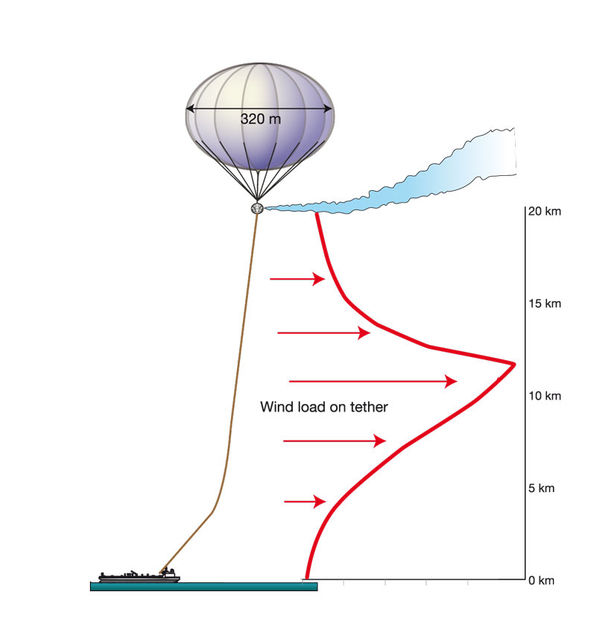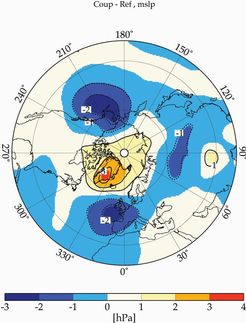Could paint particles protect the planet?
New geoengineering concept for a climate change ‘insurance policy’
Advertisement
Dispersing fine (sub-micron) light-scattering particles into the upper atmosphere could help to combat climate change, suggests a former UK government advisor and chemical engineer.

Five tethered balloons would loft 1.5 million tonnes of titanium dioxide particles into the stratosphere each year. The balloon size is far larger than any launched to date to avoid ‘blow over’ from the fierce winds that the tether will experience 10 km above the Earth. The cost of the technology is significantly cheaper than other proposed stratospheric particle injection systems such as aircraft, artillery, and even tall towers.
IChemE/A Revell
The technology concept developed in the UK and first revealed in this month’s tce magazine, advocates dispersing benign titanium dioxide particles as used in paint, inks and sunscreens into the stratosphere to deflect the sun’s rays. In a tce webinar, Peter Davidson, a Chartered Chemical Engineer, Fellow of the Institution of Chemical Engineers (IChemE) and the Royal Academy of Engineering, and a former senior innovation advisor to a number of government departments, will call for this geoengineering concept to be researched as an insurance policy to cope with possible catastrophic effects of global warming if we don’t manage to reduce CO2 emissions fast enough.
“While it’s essential that we work to reduce carbon dioxide emissions now, it would be wise to have a well-researched emergency system in reserve as a Plan B,” says Davidson.
The idea may sound like science fiction; but the concept in fact mimics the earth-cooling effects of large volcanic eruptions which occur several times a century. When in 1991 Mount Pinatubo erupted in the Philippines, it caused temperatures to drop by around 0.5oC around the globe for two years, ending most talk of global warming during this period.
The eruption threw 20 million tons of sulphur dioxide into the stratosphere, forming a fine mist of sulphuric acid particles that spread over the globe in a matter of months.
As the size of volcanic aerosol particles is similar to the wavelength of sunlight, they scattered a small proportion of the light (~1 %), and hence its heat back into space. The Earth cooled.
Adding sulphuric acid to the stratosphere degrades the ozone layer, and may cause regional changes in precipitation. We need a benign but similarly sized particle; Davidson suggests Titanium Dioxide (TiO2), mankind’s most commonly-used pigment. It is stable in air, non-toxic and seven-times more effective at scattering light than sulphuric acid. Titanium is abundant in the earth’s crust and five million tonnes a year of pigment is produced currently so supply appears feasible. If you are reading this on a printed page the ink and the paper probably both have a TiO2 pigment in them.
With a candidate particle identified, the next challenge is devising a system to effectively and economically lift and disperse millions of tons of particles some 20 km (~ 65,000 feet) up into the stratosphere, so they stay up for a couple of years and do not immediately get rained out.
Davidson says: “The impact of global warming is predicted to be most severe on the world’s poorest peoples, both because of their lack of resources and because of where they happen to be living. I would hope we could ensure that these peoples have a stake in decision-making and the opportunity to have their voice heard, alongside the richer countries, and appropriate NGO’s (for example environmentalists), as well as other bodies.
“Ideally an independent charitable trust funded by a variety of stakeholders from around the world would research not only the technology but suitable governance, legal and ethical frameworks,” adds Davidson.
The total capital cost of the balloon, tethers, ultra high pressure pumps, and the production and transport of the particles is estimated to be £500m plus £600m in annual operating costs in a paper to be published by the Royal Society. These costs are perhaps thirty times lower than the next best technologies considered, such as large numbers of very sophisticated jet aircraft, and do not have the same carbon footprint. “Space mirrors on the scale needed and 20km tall towers are likely to be for the 22nd century not this one.”
Very approximate estimates are that we’d need to disperse over a million tonnes of titanium dioxide per year to keep planetary temperatures constant if CO2 levels in the atmosphere double. If such an insurance policy was needed we would have to do this for 50 to 150 years. Ocean acidification would be a worry but this might be still worse if such temperature control did not keep methane emissions from melting arctic tundra or seas under control.
At current prices, supplying these particles would cost around £3bn per year or around 50p per person per year.
Davidson says: “Creating a suitable insurance policy for climate remediation is a vital task. It will not do to underestimate the challenges. Much research and work on governance is still needed, but a vision is now on offer for debate, and development where potential means of solving some of the most difficult technical challenges have been identified. It would be short-sighted to put-off research of such a safety-device – like trying to develop a life-jacket when you’re swept out to sea and struggling in the water.”






























































